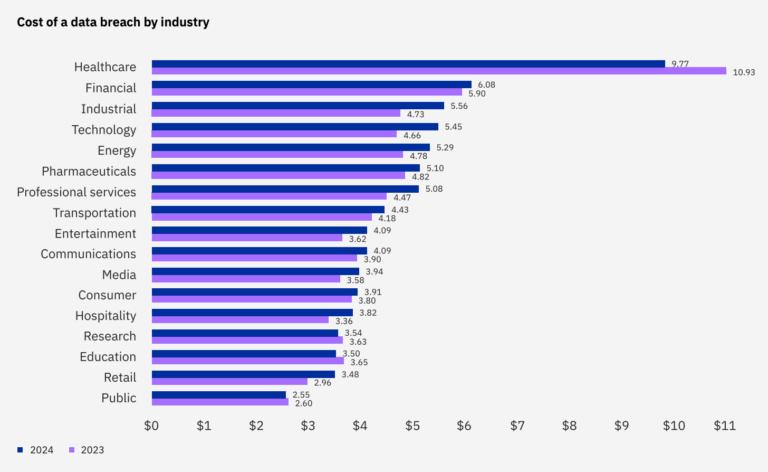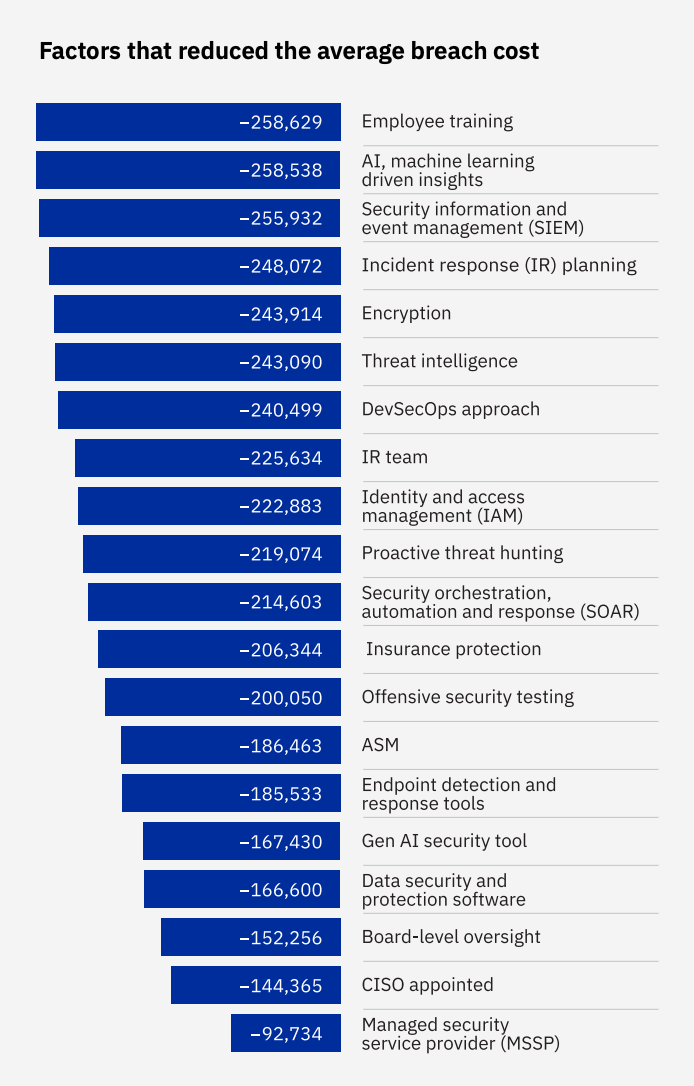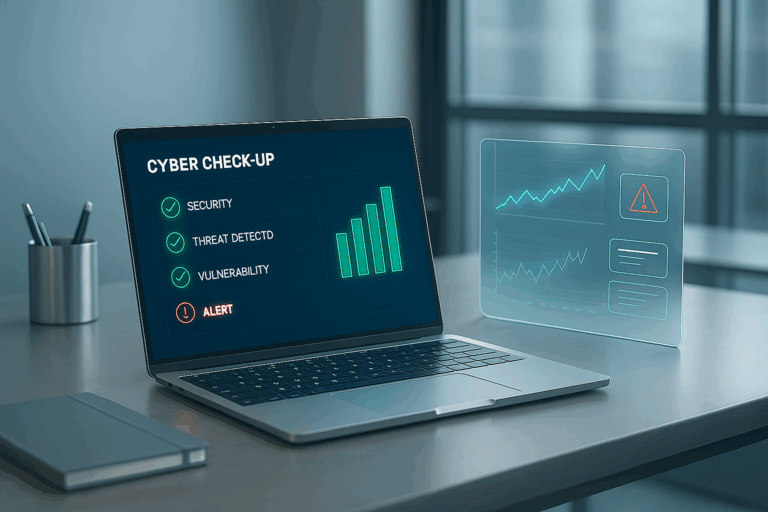The true cost of a data breach for fintech companies
According to IBM’s Cost of a Data Breach Report 2024, the global average cost of a data breach has surged by 10%, reaching $4.88 million. For the financial sector, the impact is even more severe: $6.08 million per incident.
What’s driving these skyrocketing costs? Business disruption, customer support efforts, and high remediation expenses. What’s more worrying is that more than half of organizations pass these costs onto their customers.
As fintech companies expand their digital operations, the attack surface grows—and so does the shortage of skilled cybersecurity professionals. This widening skills gap makes financial institutions even more vulnerable to increasingly sophisticated cyber threats.

What is a data breach?
A data breach occurs when unauthorized individuals gain access to confidential information, either by exploiting vulnerabilities, stealing credentials, or bypassing security controls. For fintech companies, data breaches are particularly damaging. This is because they often involve highly sensitive financial data that can be used for fraud, identity theft, and other malicious activities.
Types of data targeted in fintech
Cybercriminals target fintech organizations for the high value of the data they process. The most common types of compromised data include:
- Customer financial data – Bank account details, credit card numbers, and transaction histories.
- Personally Identifiable Information (PII) – Names, addresses, phone numbers, and government-issued IDs.
- Authentication credentials – Usernames, passwords, and API keys, often used for unauthorized access.
- Transaction and payment data – Digital wallet information, blockchain transactions, and payment processing records.
- Internal corporate data – Fraud detection algorithms, risk assessment models, and proprietary financial strategies.
Nearly half of all breaches (46%) involved customer personal data, making it the most commonly targeted asset. The financial and reputational consequences of such breaches can be devastating. It can lead to regulatory fines, customer dissatisfaction, and loss of investor confidence.
The true cost of a data breach in numbers
Cyberattacks are no longer just a possibility for fintech companies—they are an expected cost of doing business. But just how expensive can a breach be? IBM’s report provides a stark reality check: the financial impact of cyber incidents continues to climb. That puts immense pressure on organizations to strengthen their defenses.
These are some key statistics highlighted in the report:
- $4.88 million is the global average cost of a data breach (up 10% year-over-year).
- $6.08 million is the average cost for financial services breaches.
- 52% of organizations pass breach-related costs onto their customers.
- 46% of breaches involved customer personal data, the most commonly stolen asset.
- $1.76 million higher costs for organizations facing a cybersecurity skills shortage.
- 11% more costs from lost business and post-breach response over the previous year.
- 70% of organizations experienced significant or very significant disruption to business as a result of a breach.
- Only 12% of organizations fully recovered from their data breaches.
- 258 days is the average time to detect and contain a breach.
With the global average cost of a data breach rising, fintech companies are facing even steeper consequences. This rise goes beyond immediate financial losses—it reflects the operational disruptions, customer trust issues, and regulatory consequences that follow a security failure.
How do these costs break down, and why are they rising so quickly? Let’s take a closer look at the numbers.
Why has the cost of a data breach risen?
Several factors contribute to the rising financial impact of data breaches:
- Business disruption – System downtime, halted transactions, and delayed services lead to direct revenue loss.
- Customer support efforts – Organizations must dedicate resources to handling complaints, offering credit monitoring, and managing public relations crises.
- High remediation costs – Investigating the breach, implementing new security measures, and paying regulatory fines add up quickly.
It is very concerning to learn that more than half of breached organizations (52%) shift these costs onto their customers through price increases. This can only deteriorate trust and damage long-term customer relationships.
Compounding the issue, the cybersecurity skills shortage has grown by 26.2% over the past year. This is directly impacting response times and increasing breach-related expenses. Organizations lacking skilled security personnel faced an additional $1.76 million in breach costs, highlighting the urgent need for stronger defenses and proactive security strategies.
The financial sector is the second most costliest industry
Among all industries, financial services consistently rank as one of the most expensive when it comes to data breaches. Only the healthcare sector experiences higher breach costs. Financial services are particularly vulnerable due to the direct financial implications of stolen data and the regulatory obligations that come with it.
Several key factors contribute to the high breach costs:
- High-value data – Stolen financial records, including banking details, credit card numbers, and transaction histories, are extremely lucrative on the dark web.
- Strict regulatory compliance – Financial institutions must adhere to stringent regulations such as GDPR, PCI DSS, and local banking laws. A breach often results in hefty fines and legal fees.
- Customer trust is critical – Unlike other industries, where customers may tolerate some level of risk, trust is everything in financial services. A breach can lead to rapid customer churn and long-term reputational damage.
- Complex digital ecosystems – Fintech companies rely on a mix of cloud platforms, APIs, and third-party integrations, creating multiple entry points for attackers. Third-party breaches accounted for a significant share of incidents in 2024.
- Operational downtime is costly – A disruption in banking services, payment processing, or trading platforms can result in millions in lost revenue within hours.

What can fintech companies do to reduce the average breach cost?
While data breaches are becoming more frequent and costly, cybersecurity leaders in fintech can take proactive measures to strengthen their organization’s security posture, minimize risk, and significantly reduce the financial impact of a breach.
Organizations that implemented the following strategies saved between $92,000 and $258,000 per breach, according to IBM’s report, demonstrating the tangible benefits of proactive security investments.
- Invest in employee training ($258K saved per breach) – Security awareness programs, phishing simulations, and insider threat detection training help prevent human errors that often lead to breaches.
- Use AI and Machine Learning for threat detection ($258K saved) – Organizations that deploy AI-driven security insights reduce breach costs by automating threat detection, anomaly identification, and response processes.
- Implement Security Information and Event Management (SIEM) solutions ($255K saved) – Real-time monitoring and centralized threat intelligence help organizations detect and respond to breaches faster, minimizing damage.
- Develop a strong Incident Response (IR) plan ($248K saved) – Having a predefined, well-tested IR strategy ensures rapid containment and regulatory compliance, reducing costs related to business disruption.
- Encrypt data at rest and in transit ($243K saved) – Strong encryption ensures that even if attackers gain access, sensitive financial data remains unreadable, reducing the risk of regulatory fines and fraud.
- Enhance threat intelligence capabilities ($243K saved) – Proactive threat hunting and intelligence-sharing allow organizations to detect attacks early and prevent costly breaches.

Lower the cost of a data breach with proactive cybersecurity
The key to reducing the financial and operational impact of a breach is a proactive cybersecurity strategy that identifies vulnerabilities before attackers do.
At Clovr Labs, we help fintech companies minimize their attack exposure and lower breach costs through:
- Threat Mapping & 360º Attack Exposure – Identifying and addressing vulnerabilities before they can be exploited.
- Non-Linear Defense Strategies – Moving beyond traditional security with adaptive, intelligence-driven protection.
- Tailored Fintech Security Solutions – Designed specifically for financial services, covering compliance, fraud prevention, and secure transactions.
Investing in proactive security measures will significantly reduce breach-related costs, downtime, and reputational damage for your company.
Let’s talk about how Clovr Labs can help you stay ahead of cyber threats.







